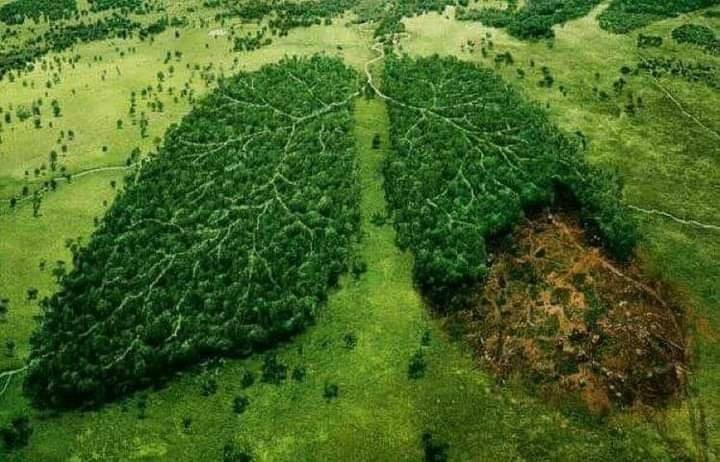
Forests are often referred to as the “lungs of the Earth,” a poetic metaphor that encapsulates their vital role in sustaining life on our planet. This title isn’t merely symbolic; it reflects the indispensable functions forests perform in producing oxygen, absorbing carbon dioxide, and regulating the Earth’s climate. Just as human lungs facilitate the exchange of oxygen and carbon dioxide to sustain life, forests do the same on a global scale. However, the importance of forests extends far beyond their ecological functions. They are intricate ecosystems teeming with life, serving as homes for countless species and supporting biodiversity. Yet, these lungs of the Earth are under constant threat from deforestation, climate change, and human exploitation. Understanding the role of forests is essential to appreciating their significance and the urgent need to protect them.
Forests cover nearly one-third of the Earth’s land area, providing vital services to both the environment and humanity. Their unique ability to absorb large amounts of carbon dioxide and release oxygen through photosynthesis makes them central to maintaining the planet’s breathable atmosphere. Forests also act as climate stabilizers, influencing weather patterns, rainfall, and even global temperatures. The lush greenery of tropical rainforests like the Amazon has earned it the title of “Earth’s lungs,” as these areas are responsible for producing a significant portion of the world’s oxygen. However, this process is not as straightforward as it seems. The balance of oxygen production and consumption within forests, along with their role in carbon sequestration, makes them essential yet complex components of Earth’s ecosystems.
As humanity grapples with environmental crises, it becomes increasingly clear why forests are regarded as the lungs of the Earth. Their benefits extend beyond providing clean air; they are vital to water cycles, food security, and the survival of countless species. Yet, forests are disappearing at an alarming rate due to deforestation, logging, and agricultural expansion. To ensure a sustainable future, we must delve deeper into the intricate workings of forests, recognize their contributions, and commit to their preservation. This article explores the metaphor of forests as Earth’s lungs, delving into their role in oxygen production, carbon sequestration, climate regulation, and the devastating consequences of their destruction.
Role in Oxygen Production: The Lifeblood of the Planet
One of the primary reasons forests are called the lungs of the Earth is their ability to produce oxygen through photosynthesis. This process involves trees and plants absorbing carbon dioxide from the atmosphere and using sunlight to convert it into glucose and oxygen. The oxygen released during photosynthesis is essential for the survival of most living organisms.
Tropical Forests: Nature’s Powerhouses
Tropical forests, particularly the Amazon, are significant contributors to this process. They account for a large portion of global oxygen turnover. However, it’s important to note that forests consume nearly as much oxygen as they produce through respiration and the decomposition of organic matter. While this means forests are not net producers of oxygen, their ability to maintain the balance of gases in the atmosphere is crucial.
Carbon Sequestration: Absorbing Carbon Dioxide to Combat Climate Change
Forests play a critical role in mitigating climate change by acting as carbon sinks. They absorb carbon dioxide, a major greenhouse gas, and store it in their biomass—trunks, branches, leaves, and roots—as well as in the soil. This ability to sequester carbon helps slow the rate of global warming and its associated impacts.
Carbon Storage: A Quantifiable Benefit
| Forest Type | Average Carbon Storage (tons/hectare) |
|---|---|
| Tropical Rainforests | 200–250 |
| Temperate Forests | 150–200 |
| Boreal Forests | 100–150 |
The table above illustrates the carbon storage capacity of various forest types, emphasizing the immense value of preserving these ecosystems. Protecting forests not only safeguards biodiversity but also prevents the release of stored carbon back into the atmosphere, which would exacerbate global warming.
Climate Regulation: Stabilizing Weather Patterns
Forests are integral to regulating the Earth’s climate by influencing weather patterns and maintaining temperature stability. They act as natural air conditioners, releasing water vapor through a process called transpiration. This contributes to cloud formation and precipitation, particularly in tropical regions. For instance, the Amazon rainforest significantly affects rainfall patterns in South America and beyond.
The Ripple Effect of Forest Loss
Deforestation disrupts these processes, leading to reduced rainfall, prolonged droughts, and extreme weather events. This creates a domino effect that impacts agriculture, water supply, and the livelihoods of millions of people. The loss of forests also diminishes their ability to act as carbon sinks, further intensifying climate change.
Threats to Forests: The Decline of Earth’s Lungs
Despite their vital importance, forests face numerous threats, primarily from human activities. Deforestation, driven by logging, agriculture, and urbanization, is the most significant factor. Each year, millions of hectares of forest are lost, with devastating consequences for the environment.
Effects of Deforestation on Ecosystems
- Loss of Biodiversity: Forests are home to more than 80% of terrestrial species. Habitat destruction leads to the extinction of many plants and animals.
- Soil Degradation: Without trees to anchor the soil, erosion becomes a significant problem, reducing land fertility.
- Climate Impact: Reduced forest cover exacerbates global warming by releasing stored carbon and decreasing the planet’s capacity to absorb CO₂.
A Global Call to Action
Countries, organizations, and individuals must work together to combat deforestation and promote sustainable practices. Initiatives like afforestation, reforestation, and conservation projects can help restore degraded ecosystems and ensure the health of Earth’s lungs.
Conclusion: Protecting the Lungs of Our Planet
The metaphor of forests as the lungs of the Earth captures their indispensable role in maintaining life and environmental stability. They are not merely resources to be exploited but vital components of our planet’s ecological balance. From producing oxygen to regulating climate and sequestering carbon, forests perform functions that are essential for the survival of countless species, including humans.
However, the increasing rate of deforestation and environmental degradation threatens the integrity of these natural systems. If we continue down this path, the consequences will be dire—not just for the environment but for humanity. It is imperative that we recognize the value of forests and take decisive action to protect and restore them. Policies that encourage sustainable land use, corporate responsibility, and individual efforts can make a significant difference.
Forests are more than the lungs of the Earth; they are its heart, lifeblood, and soul. Protecting them is not just an environmental necessity but a moral obligation to future generations. By valuing and safeguarding our forests, we ensure a sustainable and thriving planet for all.














